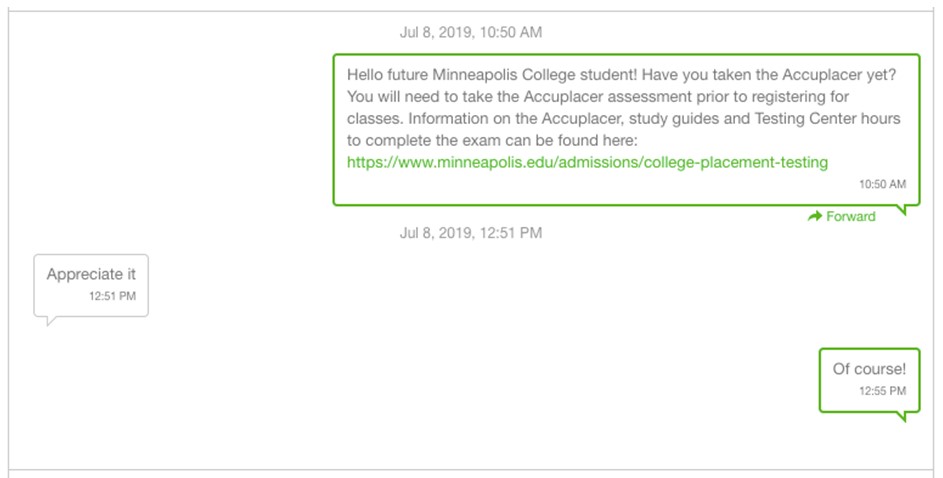
by Lauren Bloem, Manager of Monitoring & Evaluation
Last summer, AchieveMpls embarked on a creative new effort to combat “summer melt” – a term in fact unrelated to ice cream. Summer melt occurs when seniors intend to go to college the fall after graduation but don’t actually enroll. These students have completed key college-going steps, such as being accepted to college and applying for financial aid, and have concretely signaled their intention to attend college. Across the country – and in Minneapolis specifically – about 20% of graduating seniors who report a plan to go to college end up not enrolling just three months later.
Summer melt encapsulates the myriad of challenges that students can face in accessing higher education. Many students have a school counselor or other trusted adult to help them navigate the college-going process during the school year, but are left without a point of contact over the summer months. From registering for classes to getting to campus and deciphering dense higher education jargon, many college enrollment tasks can feel overwhelming without guidance and support.
As a part of the Bill & Melinda Gates Foundation To and Through Advising Challenge Grant AchieveMpls received last year, we launched a student texting campaign pilot this summer to reduce summer melt among Minneapolis Public Schools (MPS) seniors. Texting campaigns – where trained adults send out timely, relevant and actionable reminders to new high school graduates – have been shown to cut summer melt rates up to 9 percentage points. In Minneapolis, this could reduce the number of students who “melt” over the summer by 50%.
From June – August, members of our AchieveMpls team reached out to about 100 students from the MPS schools we serve to share information and support via text messages, and communicated with each student an average of five times throughout the summer. We partnered in this effort with Minneapolis College and the University of Minnesota to ensure that we had accurate information about the specific steps students need to complete over the summer to successfully enroll in the fall. With this information in hand, we then created custom text reminders for students about requirements such as submitting housing forms, registering for classes and attending student orientation.
Summer melt texting is just one strategy for closing our city’s college enrollment gaps and ensuring that students have access to the information they need to land at college in the fall. While we await final data to learn if our texting intervention made an impact for students this year, we are already refining what we hope to implement next year to create a more holistic system of support for students to successfully transition from high school to college and fulfilling careers.
